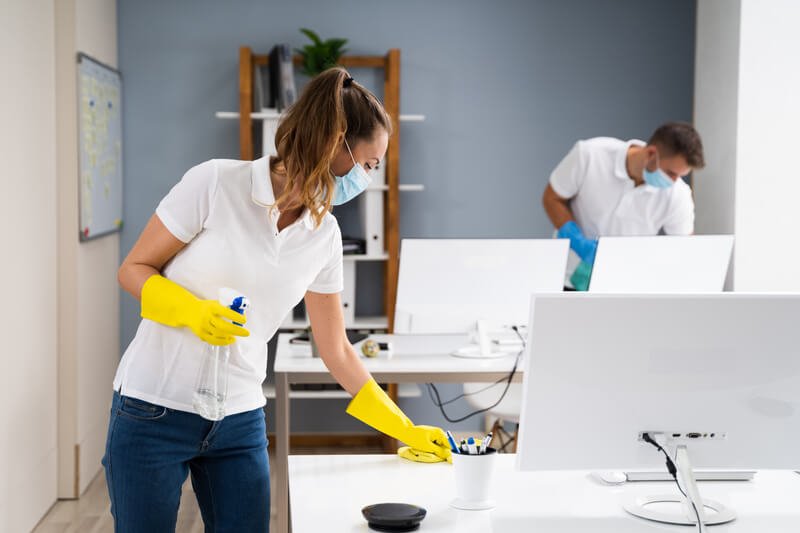Commercial cleaning services play a critical role in maintaining the hygiene and aesthetic appeal of business environments, including offices, schools, hospitals, and retail spaces. However, the environmental impact of these practices is significant and warrants careful consideration. Here’s how commercial cleaning affects the environment and the measures that can be taken to mitigate negative impacts.
Chemical Use in Cleaning Products
Commercial cleaning often involves a variety of chemicals in cleaning products. These can include volatile organic compounds (VOCs), phosphates, and other harsh chemicals that can cause air and water pollution. When these substances are washed away, they can contaminate water bodies, affecting aquatic life and disrupting ecosystems. Furthermore, VOCs contribute to indoor air pollution, which can harm human health.
Solution: Opting for eco-friendly cleaning products with biodegradable ingredients helps minimize environmental degradation. These products are not only safer for the environment but also for the people using the spaces being cleaned.
Water Usage
The cleaning industry is traditionally a high water-use business. The process of cleaning commercial spaces such as large office buildings or malls involves significant amounts of water, which can lead to wastage if not managed properly.
Solution: Implementing water-saving techniques and using equipment that requires less water for cleaning can significantly reduce water usage. Technologies such as microfiber technology allow cleaners to use less water and cleaning solutions to achieve better results.
Waste Production
Commercial cleaning can generate a considerable amount of waste, including used cleaning supplies like synthetic sponges, disposable wipes, and single-use plastics from packaging. This waste contributes to the growing problem of landfill overflow and plastic pollution.
Solution: Reducing, reusing, and recycling materials used in commercial cleaning practices can mitigate waste. For instance, using reusable cloths and refillable containers can help minimize the disposal of single-use products.
Energy Consumption
The equipment used in commercial cleaning, such as vacuum cleaners, floor buffers, and steam cleaners, often consumes a significant amount of energy. This contributes to the overall energy footprint of maintaining commercial properties.
Solution: Utilizing energy-efficient and Energy Star-rated appliances can reduce energy use dramatically. Additionally, scheduling cleaning during daylight hours can decrease the need for artificial lighting.
Sustainability Practices
Integrating sustainability into commercial cleaning involves more than just switching to green products. It encompasses a comprehensive approach that includes proper training for cleaning staff, sustainable waste management, and efficient resource use.
Solution: Companies can implement sustainability programs that encourage best practices, including chemical management, proper dosing of cleaning products, and regular audits of environmental impact. Educating staff on sustainability and environmental issues will also promote more conscious cleaning practices.
Conclusion
Commercial cleaning has a substantial impact on the environment, but by adopting environmentally friendly practices, businesses can significantly mitigate these effects. The shift towards green cleaning products, reducing water and energy consumption, and enhancing waste management practices are pivotal in fostering a more sustainable approach to commercial cleaning. This not only protects the environment but also supports public health and safety, providing a cleaner, safer environment for everyone.
By focusing on sustainable practices, businesses can play a crucial role in environmental stewardship, paving the way for a healthier planet. This transformation in the cleaning industry is not just beneficial—it’s essential for our collective future.










